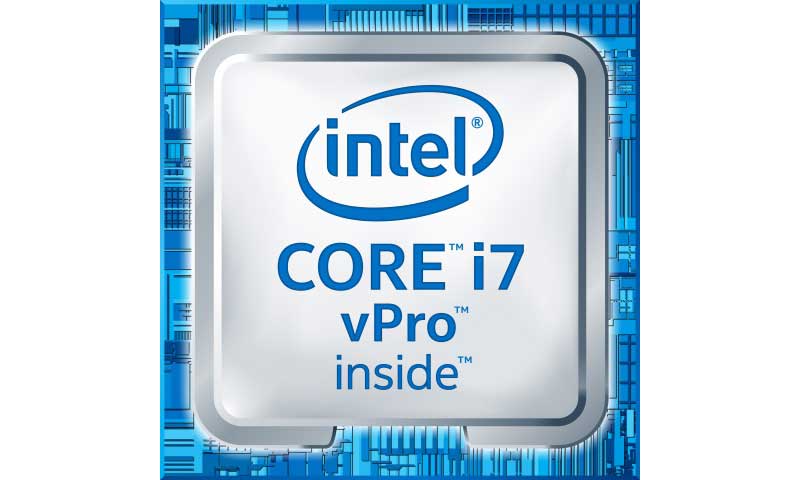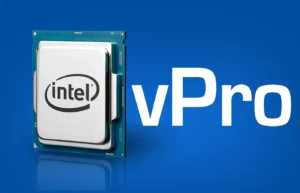
Have you ever wondered how businesses stay ahead of evolving cyber threats?
In the digital world, where organizations rely on sensitive data to operate efficiently, ensuring the security of their devices becomes critical!
This is where endpoint security takes centre stage, acting as the first line of defence against unauthorized access, malware, and data breaches.
But securing endpoints isn’t just about protecting individual devices, it’s about safeguarding the backbone of the organization’s operations.
This is where Intel vPro comes into play. Designed with advanced hardware-based security features such as encryption, remote management, and secure boot, Intel vPro offers a comprehensive solution to keep devices and data safe.
So, how does Intel vPro change the game for endpoint security?
Let’s explore how it empowers businesses to tackle modern security challenges with confidence and ease.
1. Intel vPro’s Role in Preventing Unauthorized Access
Unauthorized access to endpoints can be a significant security threat, especially for businesses with valuable data. Intel vPro helps prevent unauthorized access through multiple layers of security.
One feature, Intel Identity Protection Technology (IPT), ensures that only authorized users can access a device. IPT uses two-factor authentication, combining something you know (like a password) with something you have (like a smart card or mobile device), making it much harder for hackers to gain access to sensitive systems.
Intel vPro also uses hardware-based encryption and secure boot to prevent unauthorized changes to the system during startup, further strengthening the security of the endpoint.
For example, businesses benefit from both performance and enhanced security when paired with the intel i7 vpro specs processor, which features up to 8 cores and 16 threads.
2. Enhance Data Protection with Intel vPro
Intel vPro prioritizes data protection with advanced encryption features that safeguard sensitive information. Its built-in encryption ensures data security both at rest and in transit, while Intel’s Advanced Encryption Standard New Instructions (AES-NI) accelerates the process without compromising performance. These features help businesses comply with regulations like GDPR, HIPAA, and PCI-DSS, ensuring robust protection against unauthorized access and breaches.
- AES-NI technology: Speeds up encryption without affecting performance.
- Regulatory compliance: Supports GDPR, HIPAA, and PCI-DSS requirements.
- Enhanced security: Protects against unauthorized access and breaches.
- Built-in encryption: Secures data at rest and in transit.
Intel vPro includes hardware-based encryption that safeguards data, facilitating compliance with regulations such as GDPR, HIPAA, and PCI-DSS.
3. Intel Active Management Technology (AMT) for Endpoint Management
Intel vPro includes Intel Active Management Technology (AMT), which allows IT administrators to manage and secure endpoints remotely.
AMT provides administrators with the ability to detect, diagnose, and repair devices that are compromised or malfunctioning, even if the device’s operating system is down.
Remote Monitoring: AMT enables continuous monitoring of device health, identifying potential threats before they cause harm.
Device Recovery: In case of an issue, AMT allows IT teams to remotely reset or reconfigure the device, even if it’s powered off or in a non-bootable state.
Patch Management: AMT helps businesses deploy software updates and security patches across all endpoints without physical access.
This remote management capability ensures that any security vulnerabilities are quickly addressed, reducing the risk of a cyber attack.
4. Proactive Threat Detection with Intel vPro
Intel vPro helps detect security threats before they escalate. By combining hardware-based monitoring with advanced threat detection software, vPro technology ensures that any unusual behaviour or potential vulnerabilities are identified early.
- It does this by monitoring the system for signs of malware, unusual login patterns, or other suspicious activities. The earlier a threat is detected, the quicker it can be neutralized, reducing the risk of a security breach.
- Intel vPro’s threat detection capabilities can be integrated with existing security software, providing an extra layer of protection that complements traditional endpoint security solutions.
5. Secure Boot for Protection Against Rootkits and Malware
One of the key security features of Intel vPro is its Secure Boot functionality, which ensures that only trusted software can run during the system’s startup process.
Secure Boot checks the integrity of the system’s firmware, ensuring that it has not been tampered with by malicious actors attempting to install rootkits or other types of malware.
Malware Prevention: By ensuring that only verified software loads during startup, Intel vPro prevents the installation of harmful programs that can exploit system vulnerabilities.
Trusted Software Execution: Secure Boot ensures that every piece of software running on the device is verified and trusted, making it harder for malware to infiltrate.
Pre-Boot Protection: Secure Boot prevents malicious software from taking control of the system before the operating system even starts.
A 2021 study revealed that more than 80% of enterprises experienced at least one firmware attack in the past two years, yet only 29% of security budgets were allocated to protect firmware
6. Intel vPro’s Role in Ensuring Compliance
Compliance with industry regulations is critical for many businesses, particularly those in the healthcare, finance, and government sectors. Intel vPro provides several tools to help businesses meet compliance requirements. These tools include secure boot, hardware encryption, and secure data storage, all of which play a role in securing data and ensuring that businesses comply with various regulatory standards.
Intel vPro’s ability to provide detailed system audits and logs also helps businesses track and monitor access to sensitive information, essential for maintaining compliance with data protection laws.
7. Reduce the Attack Surface with Intel vPro
Intel vPro minimizes the attack surface of endpoints by providing built-in protections and reducing the number of points where a system can be compromised.
Through features like hardware isolation and firmware protection, Intel vPro ensures that critical system functions are separated from the rest of the operating system, making it harder for malware to spread and compromise sensitive data.
In addition, Intel vPro enables businesses to lock down unused ports and disable unnecessary services, further reducing the potential for unauthorized access.
8. Support for Virtualization and Containerization
Virtualization and containerization are increasingly used to secure endpoints by isolating workloads. Intel vPro supports these technologies by providing hardware-level security for virtual machines and containers.
This isolation ensures that even if one part of the system is compromised, the rest of the system remains secure.
Intel vPro’s support for virtualization ensures that businesses can securely run multiple workloads on the same physical device, reducing the need for separate systems and enhancing overall efficiency while maintaining security.
Conclusion
Intel vPro plays a crucial role in enhancing endpoint security by offering a range of hardware-based security features that protect against unauthorized access, malware, and data breaches.
From remote management to encryption and secure boot, Intel vPro ensures that businesses have a comprehensive and efficient security solution for their endpoints.
With its ability to detect threats early, minimize attack surfaces, and ensure compliance, Intel vPro provides businesses with peace of mind knowing their devices are secure.





